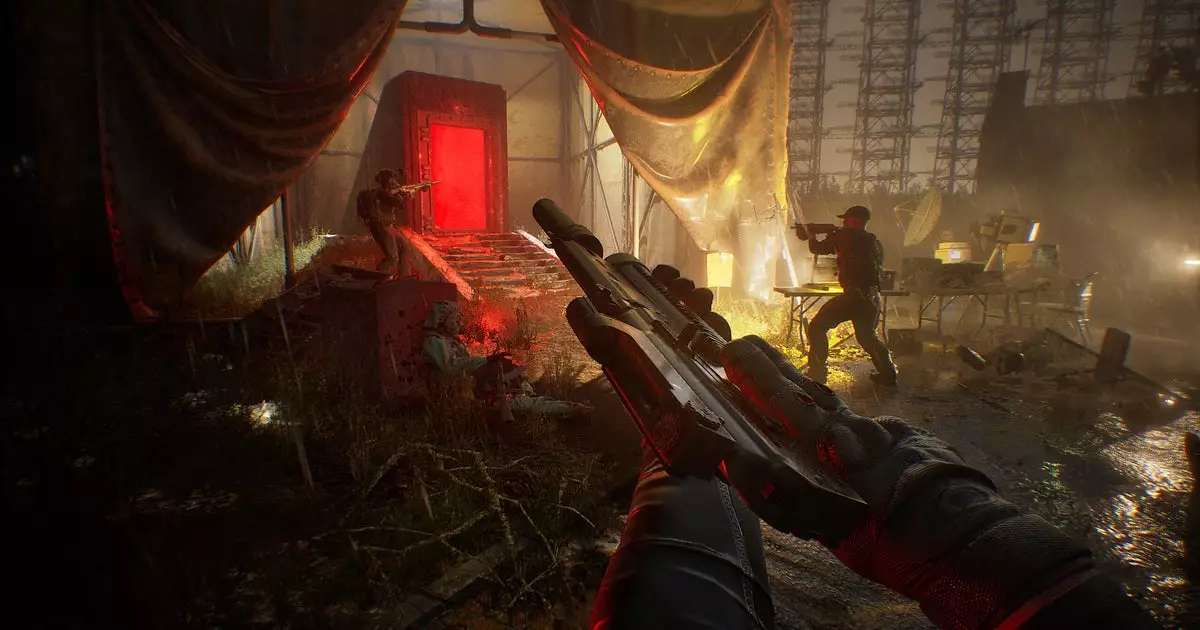The gaming universe has often been a fertile ground for unique narratives, but few concepts have pushed boundaries as intriguingly as “Phantom Line,” an open-world tactical shooter that thrusts players into a surreal reality where the threat of nuclear annihilation takes a backseat to otherworldly horrors. This venture into paranormal warfare invites players to explore the complexities of teamwork, strategy, and survival—a harrowing journey punctuated by the grotesque and bizarre. As we delve deeper into the mechanics and narrative of this game, we will uncover what makes “Phantom Line” a standout title worth exploring.
Set against a backdrop of chaos and strangeness, “Phantom Line” pushes the usual boundaries of post-apocalyptic scenarios. Instead of a traditional nuclear fallout model, the game embodies an atmosphere reminiscent of the works of David Lynch and Andrei Tarkovsky, featuring labyrinthine environments that could easily double as surrealist art installations. In this strange world, players confront demonic entities and harrowing landscapes fraught with tension, which evoke the sense of dread typical of psychological horror.
The developers have cleverly crafted a narrative where the threat level of a nuclear apocalypse is seemingly trivial compared to the nightmarish visions that await players. This shift in focus challenges gamers to reconceptualize their understanding of survival, as they navigate through kaleidoscopic terrors such as demon puppets lurking behind haunting red curtains. The story unfolds in a manner that excites curiosity while simultaneously instilling fear—the hallmark of an engaging horror experience.
The Innovative HUSK System
One of the most striking features of “Phantom Line” is the HUSK system. This gameplay mechanic fundamentally alters the player experience by allowing characters to switch between squad members mid-combat seamlessly. Such a feature not only lends itself to diverse gameplay strategies but also emphasizes the importance of teamwork in tackling paranormal threats. Coordinating actions between various members can turn the tide in chaotic encounters, allowing players to diversify tactics based on evolving battlefield conditions.
In scenarios where teamwork might falter, players can also manipulate artificial bodies as decoys or scouts, mitigating the reliance on human players who may not always exhibit the same level of tactical acumen. This element of control adds an intriguing layer to the gameplay, offering an opportunity for solo players to strategically outmaneuver both AI and spiritual adversaries.
“Phantom Line” invites players to share in the chaos through cooperative play with up to three companions. The strategic nature of the game is emphasized with features such as dynamic events and the necessity to gear up with unique weaponry and attachments. This fluidity encourages exploration of various captivating locales, including the foreboding Black Forest Research Facility. The prospect of environmental storytelling in these spaces serves to deepen immersion and provide context for the supernatural phenomena encountered.
Throughout the game, players will also experience the stark contrast of hanging out in a nuclear submarine, customizing their artificial bodies, and hoarding phat weaponry, which humanizes what could otherwise become a monotonous cycle of combat. This balance between action and downtime offers a refreshing change of pace amid the game’s inherent tension.
A key theme embedded within “Phantom Line” is the exploration of identity in a battlefield context. The narrative posits a thought-provoking question: in combating the horrors of the unknown, how much of one’s humanity is lost in the process? This transformation is achieved through the game’s mechanic of body augmentation with “exotic elements” that further complicate the character’s journey. The notion of becoming the very thing you fight against complicates moral dimensions within the gameplay, pushing players to consider the cost of survival in an environment ripe with existential dread.
“Phantom Line” stands as a provocative addition to the genre of survival shooter games. By pushing players into a realm where existential threats far exceed the conventional, it raises compelling questions about identity, survival, and the nature of horror. With its unique HUSK system, cooperative dynamics, and haunting environments, it succeeds in crafting a tension-filled experience that challenges players to adapt, explore, and ultimately confront their darkest fears. As gaming continues to evolve as an art form, “Phantom Line” promises to leave an indelible mark—both as a significant entry in the genre and as a harbinger of future narratives in digital storytelling.


Leave a Reply